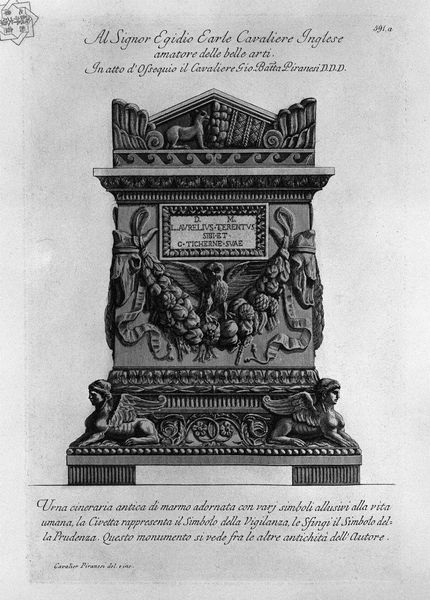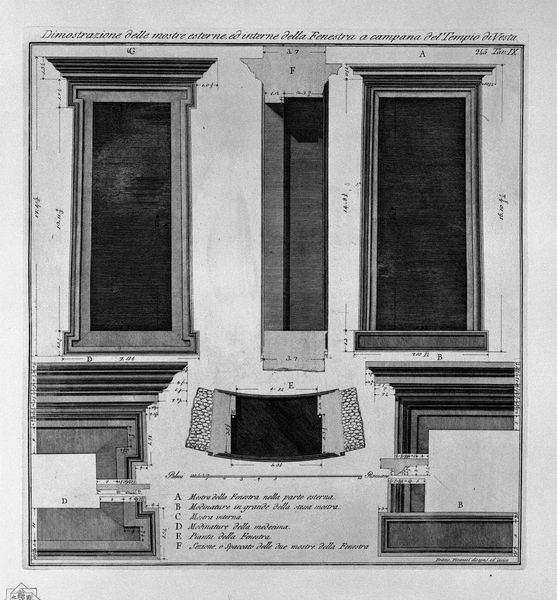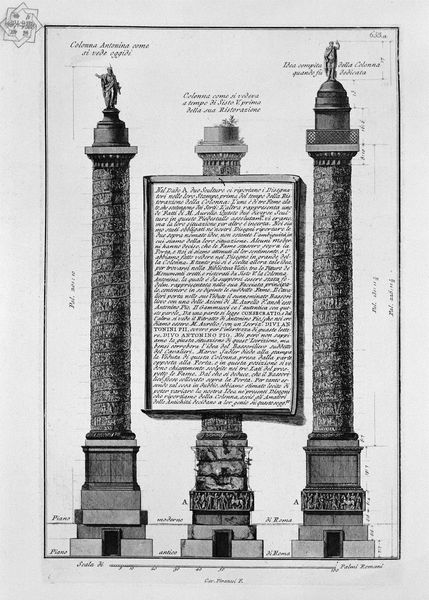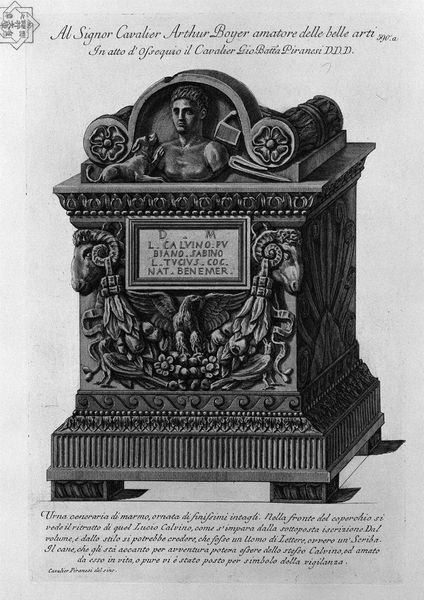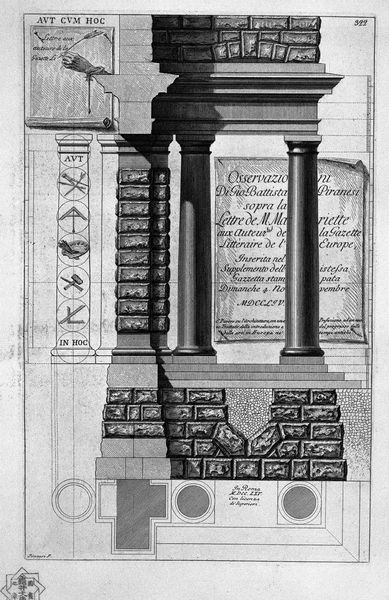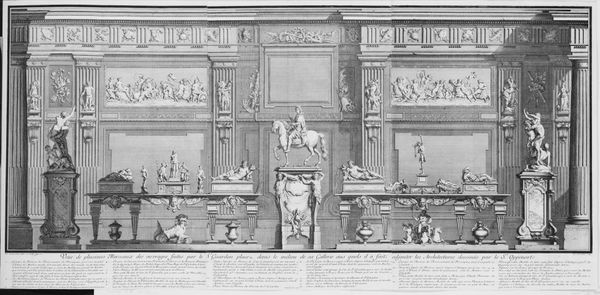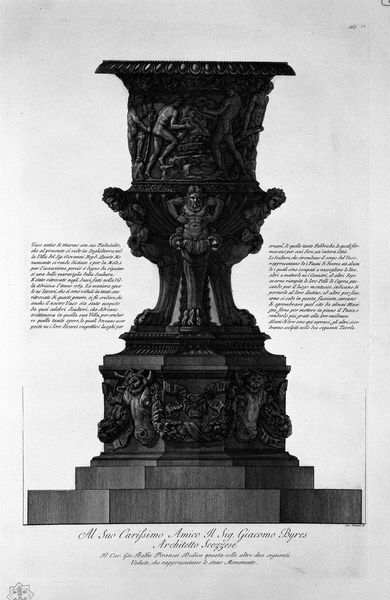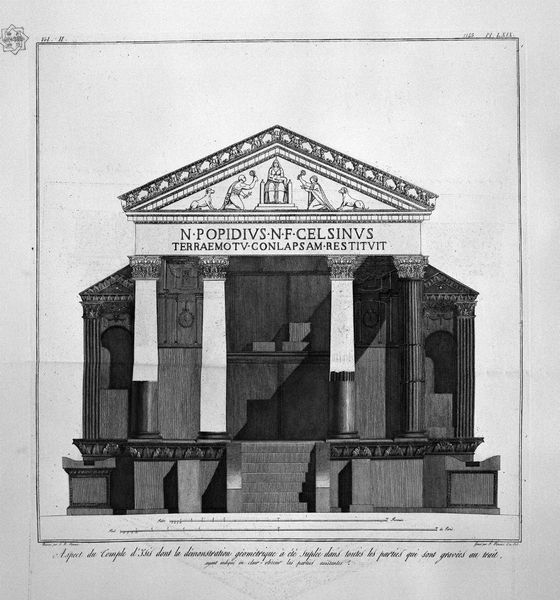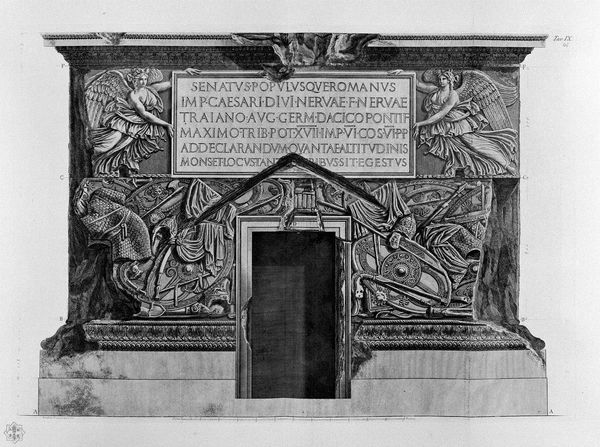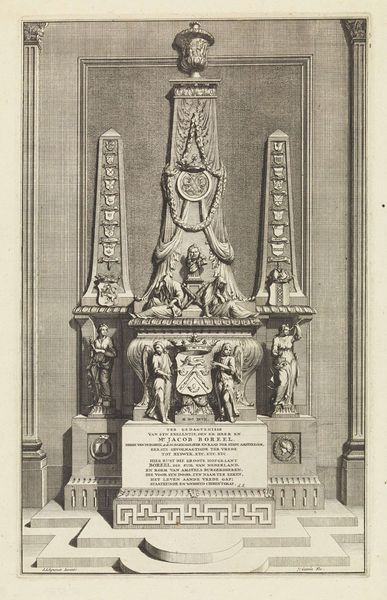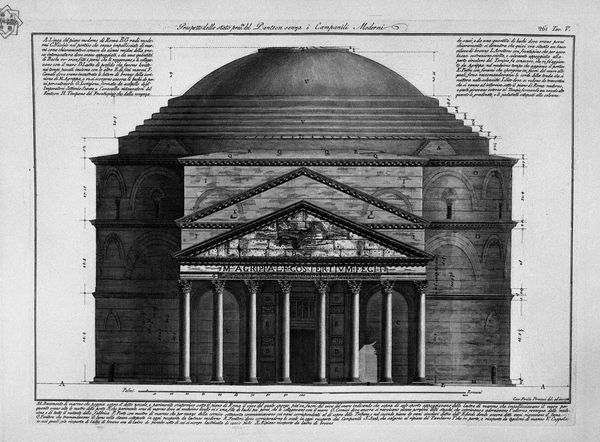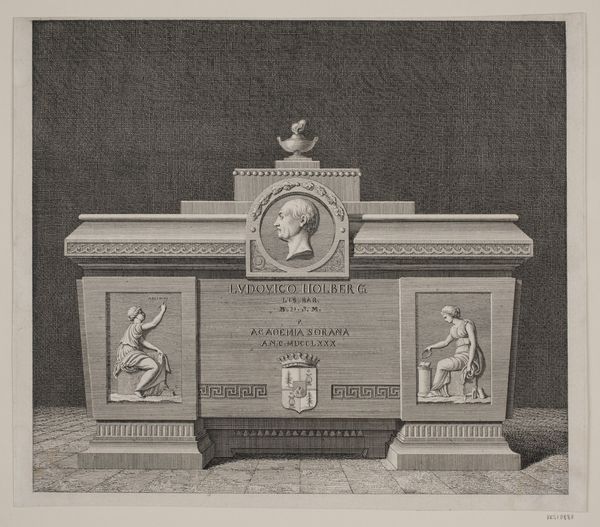
drawing, print, etching, bronze, engraving, architecture
#
drawing
# print
#
etching
#
sculpture
#
greek-and-roman-art
#
classical-realism
#
perspective
#
bronze
#
geometric
#
ancient-mediterranean
#
column
#
arch
#
carved
#
line
#
history-painting
#
engraving
#
architecture
Copyright: Public domain
Giovanni Battista Piranesi created this etching of the Trajan Column, a monument erected in ancient Rome to commemorate Emperor Trajan's victory in Dacia. Dominating the facade are the eagles, symbols of imperial power and divine authority, which guard the structure. Note the inscription: a dedication by the Senate and the Roman people to Trajan, highlighting his achievements. These motifs are not unique to Rome; the eagle, for instance, appears across cultures from Mesopotamia to the Americas, signifying strength and sovereignty. Consider how the Roman eagle, adapted from earlier Greek and Near Eastern traditions, differs from its counterparts in, say, indigenous American art. Each culture imbues the symbol with its own specific values and meanings, yet the underlying themes of power and spirituality persist. Such recurring patterns reveal a collective unconscious, where archetypal symbols resonate across time and space. The potency of these images lies in their ability to evoke primal emotions, engaging viewers on a subconscious level and forging a timeless connection to our ancestors. Thus, we observe the cyclical journey of symbols – constantly resurfacing, evolving, and adapting to new cultural landscapes.
Comments
No comments
Be the first to comment and join the conversation on the ultimate creative platform.
